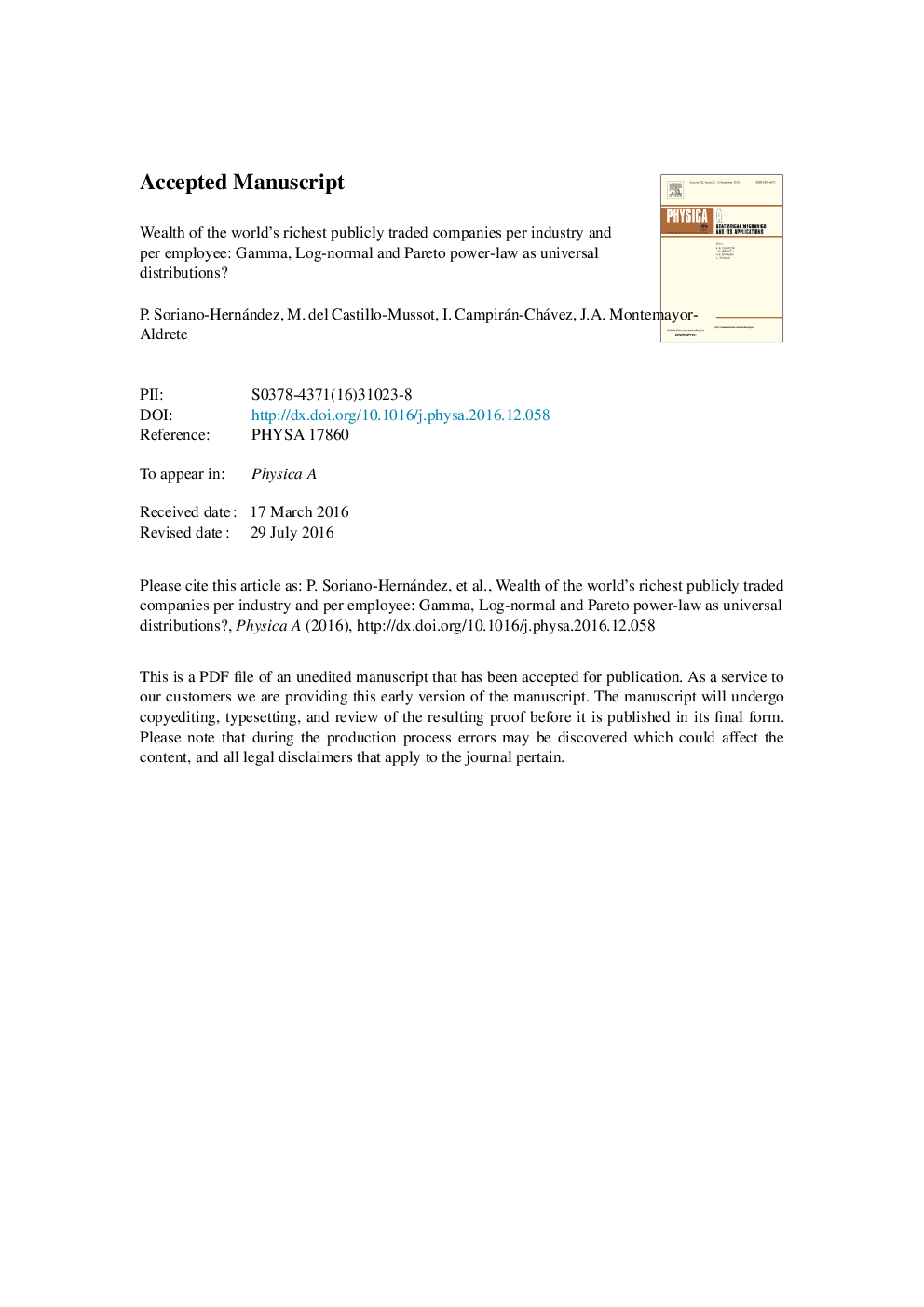| Article ID | Journal | Published Year | Pages | File Type |
|---|---|---|---|---|
| 5102940 | Physica A: Statistical Mechanics and its Applications | 2017 | 27 Pages |
Abstract
Forbes Magazine published its list of leading or strongest publicly-traded two thousand companies in the world (G-2000) based on four independent metrics: sales or revenues, profits, assets and market value. Every one of these wealth metrics yields particular information on the corporate size or wealth size of each firm. The G-2000 cumulative probability wealth distribution per employee (per capita) for all four metrics exhibits a two-class structure: quasi-exponential in the lower part, and a Pareto power-law in the higher part. These two-class structure per capita distributions are qualitatively similar to income and wealth distributions in many countries of the world, but the fraction of firms per employee within the high-class Pareto is about 49% in sales per employee, and 33% after averaging on the four metrics, whereas in countries the fraction of rich agents in the Pareto zone is less than 10%. The quasi-exponential zone can be adjusted by Gamma or Log-normal distributions. On the other hand, Forbes classifies the G-2000 firms in 82 different industries or economic activities. Within each industry, the wealth distribution per employee also follows a two-class structure, but when the aggregate wealth of firms in each industry for the four metrics is divided by the total number of employees in that industry, then the 82 points of the aggregate wealth distribution by industry per employee can be well adjusted by quasi-exponential curves for the four metrics.
Keywords
Related Topics
Physical Sciences and Engineering
Mathematics
Mathematical Physics
Authors
P. Soriano-Hernández, M. del Castillo-Mussot, I. Campirán-Chávez, J.A. Montemayor-Aldrete,
